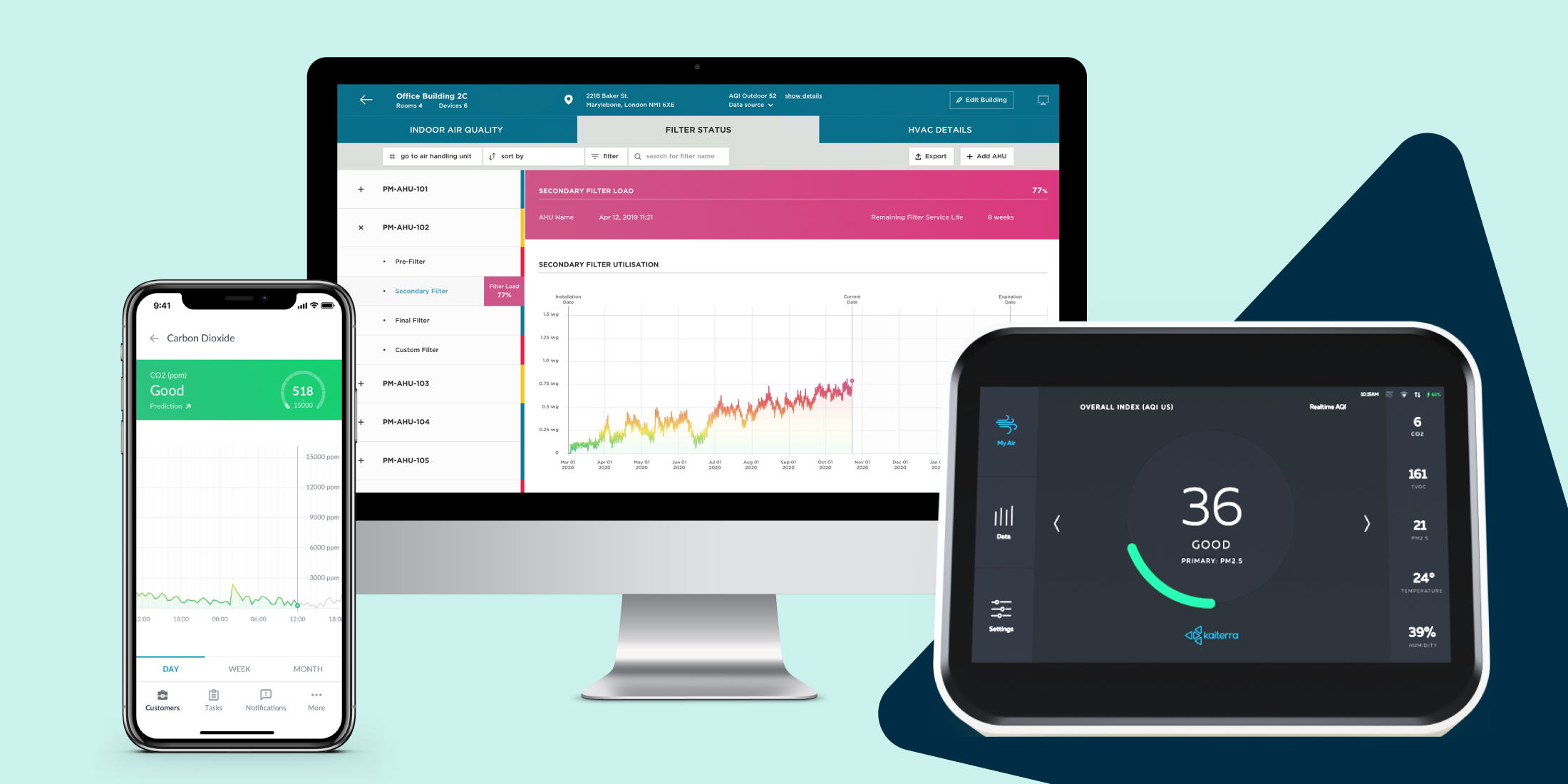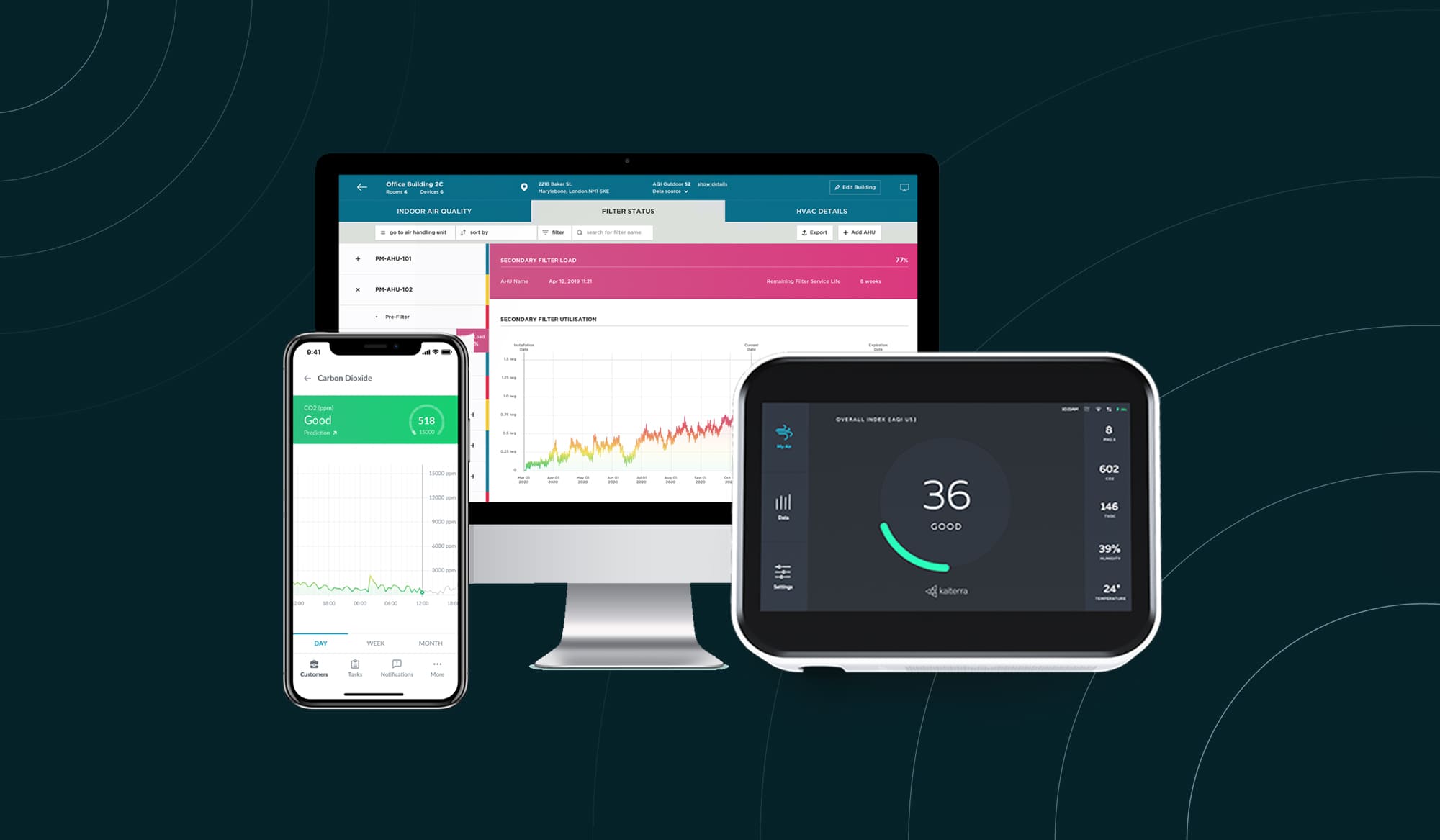Newsletter
The Kaiterra Sensedge has long been known for its accuracy, modular design, and sleek appearance, but amid COVID-19 this smart IAQ sensor has become celebrated for much more. In our recent partnership with qlair, a leader in intelligent IAQ solutions, data collected from the Sensedge has been utilized to assess the airborne transmission risk of COVID-19.
How Kaiterra Data is Transformed into Actionable Insights
Widely used in commercial buildings, offices, schools, and retail spaces worldwide, the Sensedge monitors harmful indoor pollutants ranging from particulate matters to invisible gasses such as TVOC and CO2, tracks pollutant levels in real time, and displays data in the Kaiterra dashboard and app.
This data alone has the power to help you form impactful decisions about your indoor spaces, but when combined with qlair’s AI-powered analytics, the insights can be game-changing.

With this unique collaboration, end users of the Sensedge can leverage qlair’s powerful reporting and analytics to derive even deeper insights from the real-time data collected by the Sensedge. Qlair’s algorithm allows users to not only detect the source of indoor air pollution within the building, but it also automatically generates alerts and recommendations on how to solve building obstacles. By analyzing the unique air quality trends or anomaly collected by the Sensedge, qlair is able to provide actionable next steps to help building owners and managers make improvements efficiently.
How IAQ Can Be Used to Assess COVID-19 Risk
The Sensedge tracks several indoor air pollutants known for their adverse effects on human health and building efficiency. These indoor contaminants can increase the risk of ailments like respiratory disease, productivity-loss, fatigue, and more. Data on these indoor air pollutants can also be used to assess the effectiveness of the HVAC and filtration systems, producing valuable insights into energy and operating efficiency.
Similarly, real-time air quality data can be used to assess the safety of your indoor air amid COVID-19.
What parameters should be measured during COVID-19?
Latest research from publications like the CDC and ASHRAE provide clear support of the link between IAQ and the airborne transmission of COVID-19. Specifically, the indoor air quality parameters that should be tracked and maintained include:
- Carbon Dioxide (CO2).
Carbon Dioxide levels can be a reliable indicator of fresh air levels within a given space. Because increased fresh air ventilation is recommended during COVID-19, monitoring and maintaining proper CO2 levels is a great place to start. Clean air spaces should have Carbon Dioxide levels of no more than 800 ppm. - Particulate Matter (PM2.5)
By monitoring particulate matter over time, you can ensure that you filters are performing at their desired rate. In addition, PM2.5 levels should be controlled as Harvard research suggests a small increase in exposure to this pollutant can lead to a large increase in COVID-19 mortality rates. Make sure to maintain PM2.5 levels below 10ug/m3. - Relative Humidity.
SARS-CoV-2 is a lipid-enveloped virus that lingers and survives in spaces with dryer indoor conditions. To combat the potential of transmission through the air, relative humidity should be kept between 40 and 70 percent.
If you are interested in learning more about IAQ and COVID-19, check out our COVID-19 resource center.
Indoor Air Quality Is More Important Than Ever During and After COVID-19
Indoor air quality has been a threat to human health for decades, but it appears the global pandemic has a sparked a long-overdue shift in public interest. Whether you are planning to reopen in the coming months or are looking to protect your occupants from future disaster, IAQ should be a priority for all buildings types.
If you are struggling to identify a first step, check out this guide to clean air from the qlair team: How Can Your Improve Indoor Air Quality? 10 Steps to Clean Air
Kaiterra provides air quality monitors and an IAQ analytics dashboard for healthy buildings and offices, helping workplace leaders and healthy building pioneers assess and improve their indoor air quality. Our indoor air quality monitors like the Sensedge and the Sensedge Mini can be found in many of the world’s most iconic buildings and workplaces, such as the Empire State Building and the Burj Khalifa.






.png?width=200&height=148&name=Menu%20C%20(2).png)

.png?width=307&height=228&name=Menu%20-%20D%20(1).png)
.png)




